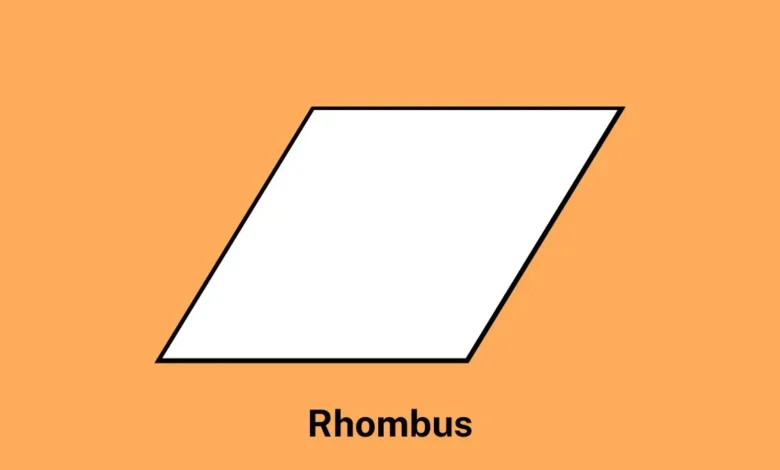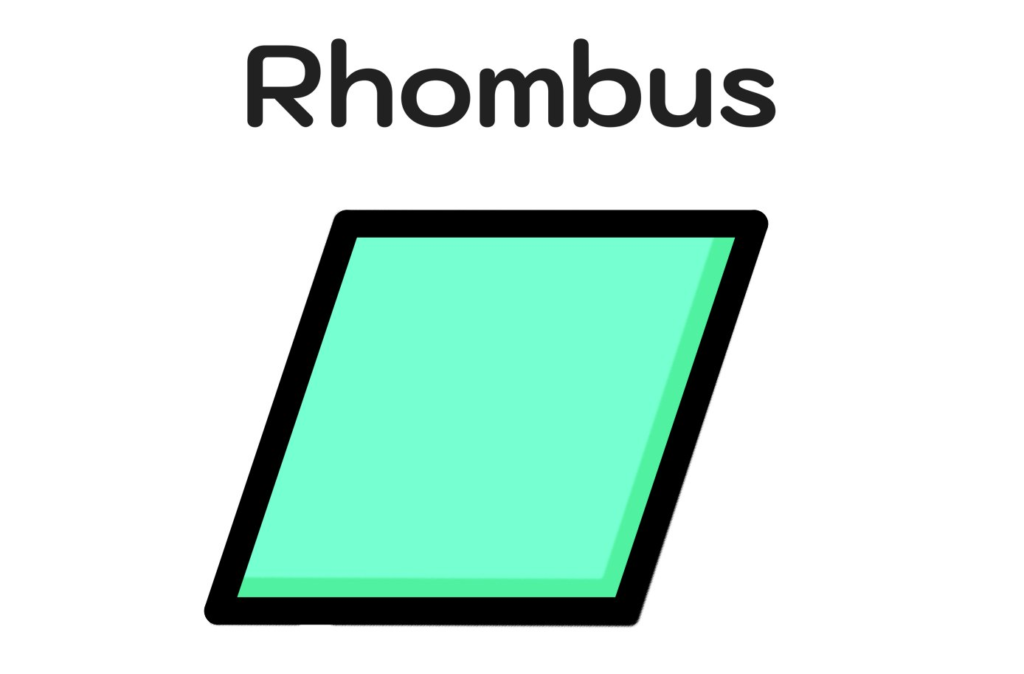The Complete Guide to the Rhombus Shape: Characteristics, Applications, and Fascinating Facts 2024

rhombus shape is a type of quadrilateral characterized by its four equal-length sides. It falls under the broader category of parallelograms and has a distinct slanted appearance that sets it apart from other geometric shapes. The word “rhombus” comes from the Greek word “rhombus,” meaning something that spins or turns, reflecting the shape’s symmetrical yet dynamic nature.
Unlike a square, which has equal angles of 90 degrees, the rhombus shape has opposite angles that are equal but not necessarily right angles. Its unique properties make it a fascinating subject in both geometry and practical applications. Whether you’re looking at tiles on a floor, the lattice of a garden fence, or even certain natural formations, you’re likely encountering this geometric marvel.
- Defining Characteristics of the Rhombus Shape
The rhombus shape has distinct features that make it easily recognizable. It is important to understand these defining characteristics to differentiate it from similar quadrilaterals.
2.1. All Sides Are Equal
A rhombus is defined by the equality of its four sides. This is a fundamental property that sets it apart from rectangles and other parallelograms.
2.2. Opposite Angles Are Equal
In a rhombus, the angles opposite each other are equal. This means that while the shape may look tilted or skewed, it maintains a perfect balance of symmetry.
2.3. Diagonals Bisect Each Other

The diagonals of a rhombus intersect at a 90-degree angle, dividing each other into two equal parts. This unique trait is used in various calculations involving the rhombus shape.
- A Brief History of the Rhombus Shape in Geometry
The concept of the rhombus shape dates back to ancient Greek mathematicians like Euclid, who laid the foundations of geometry. Rhombuses were studied for their symmetrical properties and relationship to other quadrilaterals. Over time, they became a key component in the study of tiling patterns, optics, and architecture.
Mathematical historians note that the rhombus has appeared in designs and patterns dating back to early civilizations, including Mesopotamian and Egyptian cultures. These designs highlight the aesthetic appeal of the rhombus shape, which has persisted through centuries of art and architecture.
- Properties of the Rhombus Shape
Understanding the properties of the rhombus shape is essential for applying it in mathematics, design, and practical scenarios.
4.1. Equal Sides
All four sides of a rhombus have the same length, making it a special parallelogram. This equality contributes to its symmetry and balance.
4.2. Opposite Angles
The opposite angles of a rhombus are congruent. This means that if one angle is acute, the other opposite will also be acute, while the remaining two angles will be obtuse.
4.3. Diagonal Properties
The diagonals of a rhombus not only bisect each other but also intersect at right angles. Moreover, they act as axes of symmetry, dividing the rhombus into four right-angled triangles.
- Differences Between a Rhombus and a Square
It’s easy to confuse a rhombus with a square since both have four equal sides. However, there are clear distinctions:
- Angles: While a square has four 90-degree angles, a rhombus does not.
- Diagonals: The diagonals of a square are equal in length, whereas the diagonals of a rhombus are not.
- Overall Shape: A rhombus often appears slanted, unlike a straight, symmetrical square.
- Mathematical Formulas Associated with the Rhombus Shape
The rhombus shape has several mathematical formulas that help calculate its area, perimeter, and diagonal lengths.
6.1. Area of a Rhombus
The area of a rhombus is calculated using its diagonals:
Area=12×d1×d2\text{Area} = \frac{1}{2} \times d_1 \times d_2Area=21×d1×d2
where d1d_1d1 and d2d_2d2 are the lengths of the diagonals.
6.2. Perimeter of a Rhombus
The perimeter is the sum of all four sides, which simplifies to:
Perimeter=4a\text{Perimeter} = 4aPerimeter=4a
where aaa is the length of one side.
6.3. Diagonal Relationships

The diagonals divide the rhombus into two pairs of congruent right triangles. These relationships can be used to derive various trigonometric properties.
- Importance of the Rhombus Shape in Geometry
In geometry, the rhombus shape serves as a foundation for understanding symmetry, area calculation, and spatial reasoning. It also helps in solving complex problems involving tiling and three-dimensional structures.
- Everyday Examples of the Rhombus Shape
You can find rhombuses in everyday life, from diamond-shaped kites to playing cards. Their symmetrical and visually pleasing design makes them common in decorations and practical tools.
- Art and Design Inspired by the Rhombus Shape
Artists and designers frequently use the rhombus shape to create dynamic patterns. From textiles to stained glass, the rhombus lends a sense of movement and balance.
- Applications of the Rhombus Shape in Architecture
Architects use the rhombus shape in floor tiling, facades, and structural elements. Its symmetry and diagonal properties ensure stability and aesthetic appeal.
- The Rhombus Shape in Nature
Nature is rich with examples of the rhombus shape, including crystal formations and certain types of leaves. These natural occurrences demonstrate its efficiency and beauty.
- How to Draw a Perfect Rhombus Shape
Drawing a rhombus can be as simple as using a ruler and protractor to ensure the correct side lengths and angles. Alternatively, graph paper can simplify the process.
- Educational Uses of the Rhombus Shape
Teachers use the rhombus shape to teach concepts of symmetry, angles, and area. Its unique properties provide a hands-on way to learn geometry.
- Common Misconceptions About the Rhombus Shape
Some people mistakenly believe all rhombuses are squares or that their angles must be 90 degrees. Clarifying these points helps avoid confusion.
- FAQs About the Rhombus Shape
What makes a shape a rhombus?
A rhombus is defined by its four equal sides and specific angle relationships.
Is a square a rhombus?
Yes, but only if all angles are 90 degrees.
Where is the rhombus shape used?
The rhombus shape appears in design, architecture, nature, and everyday objects.



